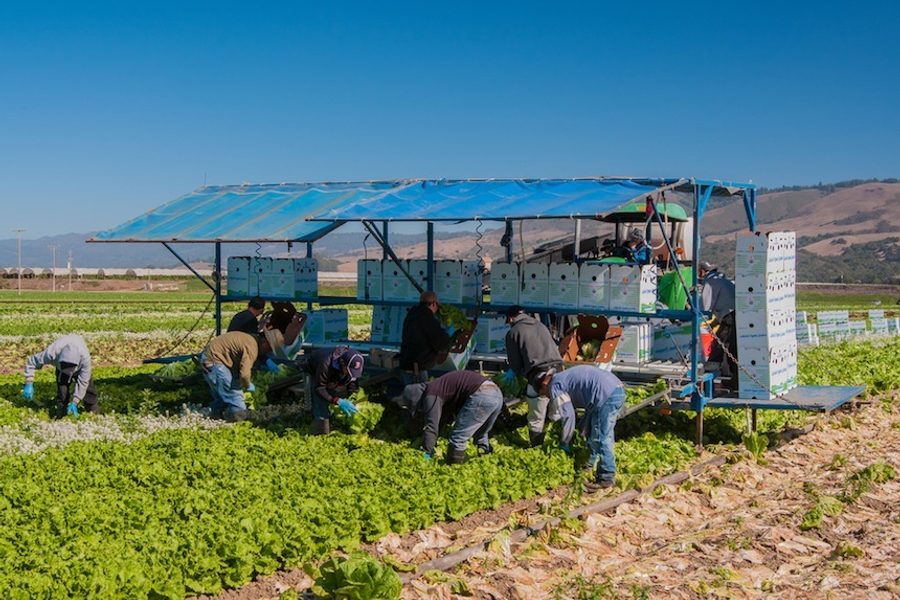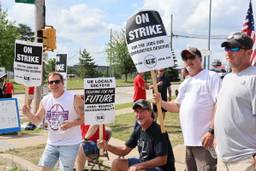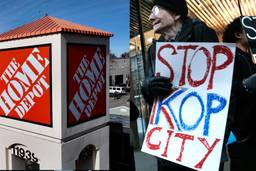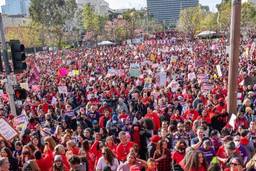
For California’s farmworkers, toiling all day in the brutal, sun-scorched fields is hard enough; the homes they return to each night are often in even worse conditions. Though the reforms won by previous generations have extended basic labor and safety protections to seasonal and immigrant farmworkers, many remain shut out of the right to decent accommodations.
According to a new report published by California Rural Legal Assistance (CRLA), the housing crisis in the agricultural workforce has worsened over the last generation. Despite the locavore fads and slow-food diets that have infused today’s farm-fresh produce with an air of glamour, as a workplace, the fields still echo the social marginalization and scandalous poverty that sparked the groundbreaking grape boycott of the late 1960s.
Don Villarejo, the longtime farmworker advocate who authored the report, tells In These Times that growers have “systematically” reduced investment in farmworker housing over the past 25 years in order to reduce overhead costs and to avoid the trouble of meeting state and federal regulations, which were established as part of a broader overhaul of agricultural labor, health and safety standards during the 1960s and 1980s. According to Villarejo, workers’ modern material circumstances are little improved from the old days of the Bracero system. That initiative — the precursor to our modern-day guestworker migrant program — became notorious for shunting laborers into spartan cabins, tents and other inhospitable dwellings on the farms themselves, beset with entrenched poverty and unhealthy, brutish conditions.
Even today, however, surveys and field reports have revealed that a large portion of workers are squeezed into essentially unlivable spaces. Some dilapidated apartments and trailer parks lack plumbing or kitchen facilities, much less any modicum of privacy; others are exposed to toxic pesticide contamination or fetid waste dumps. Workers can “live in a single-family dwelling with perhaps a dozen to 20 [people] crowding in,” Villarejo says. In some residences, “mattresses are lined up against the wall because during the daylight hours you could not be able to walk through the rooms owing to all the mattresses on the floor at that time.” Though many such dwellings house single male laborers, whole families with children are also known to live in crowded multiple-household units.
This is the “market-based” answer to the rickety labor camp of yore: Though workers are now renting from a landlord rather a farm owner, Villarejo says, “their conditions are certainly no better than they were in the kind of labor camps against which we were protesting back in the ‘60s and ‘70s about horrid living conditions.”
Such instability compounds the inherent uncertainty of seasonal farm labor. Even if they have a long-term home in one area, workers must often travel long distances to follow the growing cycles, with different crops harvested at different times over the course of a year. Many have to commute several hours to and from their homes each day; the costs of travel further sap the meager wages they already siphon off as remittances to relatives. Most farmworkers are from Mexico, and about 60 percent of them live apart from their immediate family members, leaving many constantly under pressure to wire their earnings home.
All those financial hardships leave little left over at the end of the month to make enough rent for satisfactory accommodations, forcing laborers to seek deeply inadequate options in California’s tight housing market. And laborers aren’t just frequently priced out of decent rental homes — they also face deep racial and ethnic discrimination in areas hostile to migrants. Landlords may charge predatory rates or refuse to rent to farmworkers individually; other times, local officials might manipulate zoning policies (often with support from anti-immigrant residents) to block development organizations from setting up low-cost housing for farmworkers and their families, despite laws that protect against exclusion based on race or national origin.
Advocates also point out that code enforcement can have insidious consequences, as local authorities will sometimes opt to shutter homes that have been cited as substandard, but fail to provide residents with other better-quality options.
“We have a lot of laws on the books that say that people shouldn’t live in those conditions,” says CRLA attorney Ilene Jacobs. However, when it comes to cracking down on blighted or unsafe homes, she says, “code enforcement runs a range.” Sometimes, it’s “totally lax because officials do not want to displace residents or the housing is needed to serve industry;” otherwise, she says, regulatory authorities become “overzealous and end up displacing people from substandard housing into no housing at all. And neither approach works.”
The housing barriers are further aggravated by the changing intensity of the work in California’s agricultural industry. California agriculture, according to the CRLA report, has undergone a “relaborization” in recent years, largely thanks to increased mechanization in farming. Paradoxically, massive industrialization on farms has generated more calls for specialized labor-intensive jobs, such as processing tomatoes or weeding crops. “Despite simultaneous adoption of new, labor-saving technologies,” the report states, “California agriculture is more reliant on hired workers than at any time in the past 100 years.”
As a result of the intensified demand, migrant laborers have become a more-or-less permanent fixture in the agricultural industry. According to the report, more than two-thirds of workers are “settled” — in permanent households and supporting at least one family member. In turn, many farmworker households are “mixed status,” a blend of undocumented, documented and citizen relatives. This further complicates access to jobs and acceptable residences, since immigrants, documented or not, are excluded from many of the rights and public benefits available to citizens.
And in extreme cases, some farmworkers settle in areas that are virtually off the map.
CRLA’s research found that a significant portion of the state’s farm workforce lives in what advocates call Disadvantaged, Unincorporated Communities (DUCs): rural or urban enclaves that are often cut off from essential municipal services like functioning water and sewage systems. Additionally, residents of these DUCs frequently suffer from a lack of parks, public transportation, good schools, or access to sources of healthy food.
A 2011 investigation by California Watch confirmed CRLA’s findings when it revealed horrific conditions in unincorporated farmworker communities in Southern California’s Eastern Coachella Valley. According to the report, the collection of trailer parks and labor camps resembles a shantytown: strewn with sewage and waste, and blanketed with poisonous air pollution from a nearby soil recycling company. Ironically, the settlements originally emerged as an emergency measure to improve conditions for poor migrant farmworkers. In 1992, the state passed a law intended to create more housing by easing permitting restrictions — instead, awful setups proliferated on sites where building regulations had been eased.
In coming years, labor advocates want to see worker housing return to the fields, with farm-supported programs such as the ones popular in the 1970s — only with higher standards. Instead of grim transient encampments, they’re fighting for a sustainable, regulated infrastructure with comprehensive health and safety protections.
The current crisis, Villarejo says, is “a combined problem of both the farmers who want the workers and of the workers who need to have a place to live, but don’t earn enough in the course of a year… to afford decent housing. So I think farmers … should be obligated to contribute substantially to funding to provide decent housing for workers.”
Both the federal Migrant and Seasonal Agricultural Worker Protection Act of 1983 and California’s Employee Housing Act have established a formal employer-employee relationship and outlined standards and regulations for farmworker housing provided by growers. Thus, the legal framework already exists for the industry to make concrete investments in affordable housing stock.
As far as funding goes, activists say, the state could tax growers in order to raise money for publicly subsidized rentals; farmers could also donate undeveloped land for the same purpose. In the mid-2000s, Washington state ran just such a program: a farmworker housing trust that pooled money to develop on-farm, temporary units as well as a permanent infrastructure.
Other institutions, too, could take a vital shared stake in contributing to improved farmworker housing — the same way community groups, consumers and the labor movement mobilized together for the grape boycott five decades ago. In Jacobs’ view, because “there is a fair social cost to having cheap food,” housing should be supported from multiple sources: built and managed by nonprofit organizations but using taxpayer dollars as investment. Such as community-wide approach, she says, “would make a lot more sense than having employers as landlords — and [employers] admit they’re not very good at it.”
Looming on the horizon, too, is the possibility of some kind of immigration reform. Allowing people to work on the books, to pay into their local tax base, to be able to raise their voices and demand public services in their neighborhoods without fear of deportation — all these are basic civic entitlements that will be essential for allowing workers to establish homes, and put down real roots, in the same country their labor feeds.
Michelle Chen is a contributing writer at In These Times and The Nation, a contributing editor at Dissent and a co-producer of the “Belabored” podcast. She studies history at the CUNY Graduate Center. She tweets at @meeshellchen.








